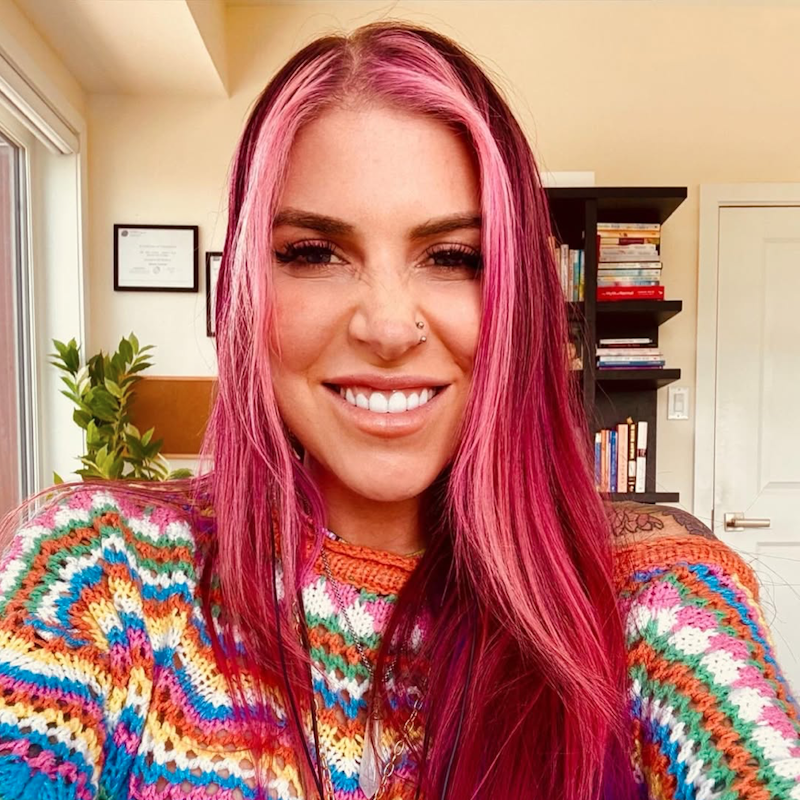As someone diagnosed with Borderline Personality Disorder (BPD) about five years ago, I’ve been in therapy for years, including a common therapeutic approach of Dialectic Behavioral Therapy (DBT) and group therapy with others plagued by this diagnosis that’s often fraught with negativity and stigma in the mental health community. Melanie Goldman founded Mind Over Borderline because “life is too precious to feel lost under the weight of sadness, anxiety and darkness,” and I’ve found her social media positive and helpful. Here is the second part in my interview with her. You can find the first part here.
Mary McCarthy: What are some of the good things about people with BPD?
Melanie Goldman: There are so many amazing things about people with BPD. Creativity’s our superpower. I’ve never met a person with BPD who isn’t creative in some way, whether it’s dance, music, poetry, writing, art, or craftsmanship. We feel everything—and when that’s channeled, it becomes art, beauty, and raw expression. We’re natural healers and empaths. We often show up as emotional first-responders for others. We understand pain and nuance, so we offer tenderness, and compassion in relationships. While some may see our intensity as “too much,” I see it as a gift that makes us friends, partners, and helpers. That all-or-nothing emotion can feel like a curse—but it’s also the reason we love fiercely, dream big, advocate boldly, and show up passionately in everything we do.
Many people with BPD are self-reflective and capable of tremendous insight into themselves and others. Once they begin healing, they often develop emotional intelligence far beyond the average person. Due to their experience with pain and exclusion, many become advocates—in mental health, LGBTQ+ spaces, disability rights, and beyond. They fight for fairness, hate injustice, and are often protectors of the underdog. Living with BPD takes incredible strength; those diagnosed have often survived trauma, invalidation, and misunderstanding, and continue to seek healing—that’s resilience.
MM: What’s the best thing people who love those with BPD can do to support them?
MG: One of the most powerful things you can do for someone with BPD is to validate that their experiences and feelings are real. We hear the word validation a lot, but it can be confusing—especially if it’s not your natural communication style. You’re feeling hurt or pushed away by the person you're trying to support or don’t fully understand their emotional world. But validation isn’t agreement—it’s acknowledging that someone’s inner experience is real to them. People with BPD often don’t fully understand what’s going on inside themselves. They grew up in chaotic, invalidating, or neglectful environments and have internalized the idea that they’re “too much” or “not enough.” So when someone—just one person—shows up and says, “That makes sense you feel that way,” or “I can see this is really hard for you,” it creates a feeling of safety, attunement, and connection that can be healing.
MM: Tell me a little bit about you helping others with BPD. How has building community helped you in dealing with BPD?
MG: When I got the diagnosis, I was handed probably the biggest booklet I’d ever seen. At the time, I didn’t even know what BPD was—but I’ll tell you this. I was beyond suicidal, and I had a choice: to give up on my life, or to give in to the idea of living a life worth living. I chose to take that booklet and try. I spent years in and out of DBT programs, trying different therapists, putting in the work. At the time, I was still in the music industry, and continue to make music. I started to see the gaps in care, the stigma, the misunderstanding, and realized I wanted to do something about it. It was something I heard in my head, shaped by years of self-doubt, fear, and internalized shame. That voice almost stopped me from going back to school. But during Covid, I took the leap, went back, did my Master’s, became a therapist, and at the same time, I was training in support groups through organizations like Emotions Matter and BPD Society of BC.
I was advocating online, doing podcast interviews, and trying to make a difference. I was burnt out and had to regulate through it. But I was committed to making sure education and stigma were being challenged in every space I entered.
After graduating, I came back to a dream I’d carried for years—a vision born from the light of my grandmother, my Bubby Rae, a legacy I wanted to change the world a whisper again I heard: “You can find your rae of light in the darkness. So can they.” After running peer groups, I became part of The BPD Bunch, a podcast and YouTube series where we speak out about functional recovery from BPD. I’m proud to be part of that. Just two months ago, I opened my own virtual clinic, a space specifically for people with BPD and their loved ones—also supporting those with depression and anxiety. But BPD remains the heart of it.
—Follow Mind Over Borderline online and on Instagram.
—Follow Mary McCarthy on Bluesky and Instagram. Read her BPD articles on Living With Borderline Personality, Glass Armor, Navigating Your BPD Person, Navigating Splitting in BPD, Abandonment is a Gift.

